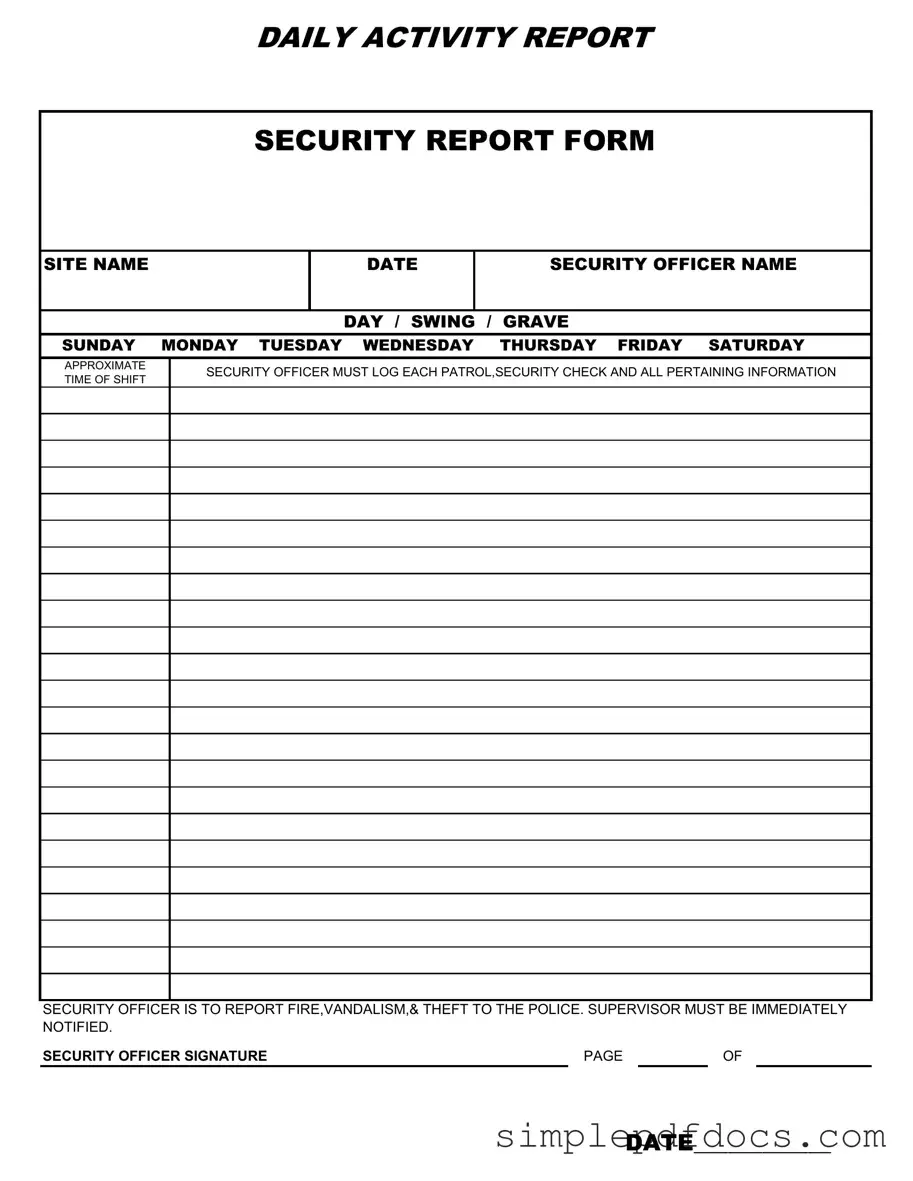Fill Your Security Guard Daily Report Sample Form
The Security Guard Daily Report Sample form is a structured document used by security personnel to record daily activities and incidents during their shifts. This form includes essential details such as the site name, date, and the security officer's name, along with specific logs for patrols and security checks. It serves as a critical tool for documenting incidents like fire, vandalism, and theft, ensuring that supervisors and law enforcement are promptly notified.
Get Document Here
